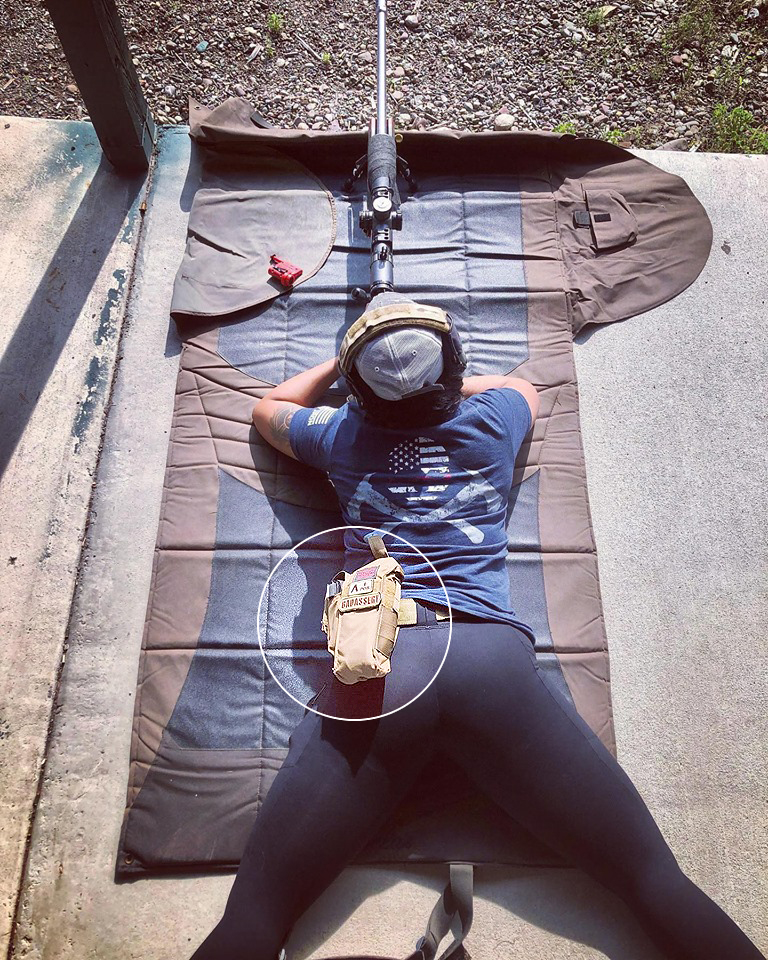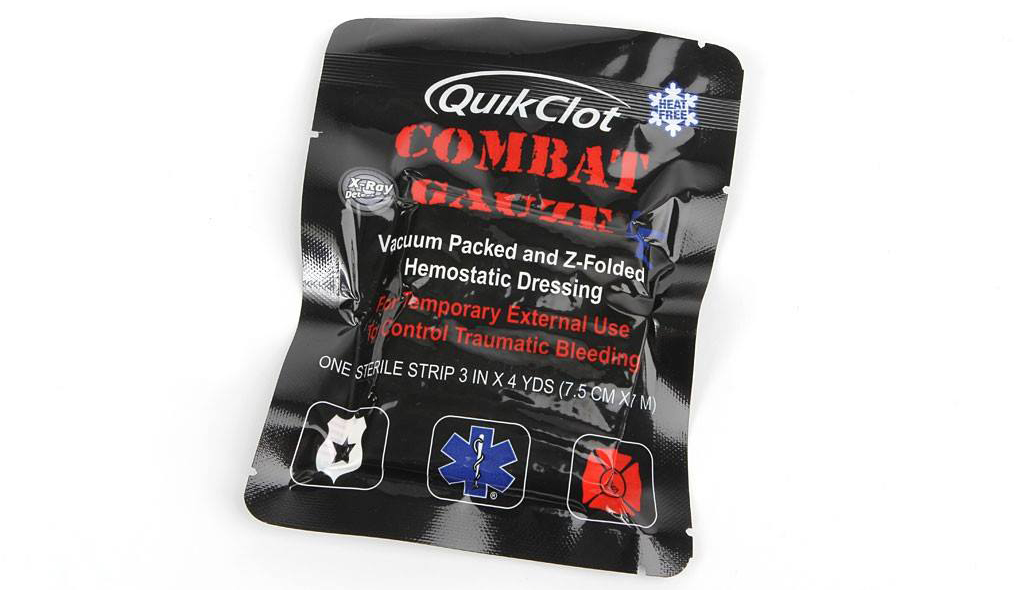Combat Gauze - why a hemostatic agent?
Posted by Kerry "Pocket Doc" Davis on Aug 23rd 2019
Why should ya keep a hemostatic agent like combat gauze in your med kit and why should it be in gauze form anyway?
Too easy. That's 'cuz it'll stop bleeding better than dirty socks from your gym bag.
Combat Gauze
Seriously, because it's going to to stop bleeding far more effectively than a nearby rag from the shop (or the second spare mag you carry instead of an
EDC first aid kit).
Combat gauze is one of the most widely known, widely used, and easily accessible hemostatic agents in existence. It is responsible for a lot of saved lives. Basically, we use a hemostatic gauze to pack into those areas that aren’t conducive to tourniquet use. Those are usually the “junctions” of our body. (See tourniquet use/combat gauze application diagram below).
The junctions are areas where something meets the central point of the body, i.e. neck meeting shoulders, armpits meeting thorax, thighs meeting groin, etc.
These junctions hold many large vessels that, should they be opened, will contribute to a life-threatening bleed.

You carry a combat gauze in a trauma kit to the range - excellent. Do you make a routine of having basic trauma necessities with in everyday life?

Carry something in your day pack, in the pocket opposite your wallet, or around your ankle. Hell, throw it into the back park of your tobacco pouch if you want, just be sure to carry something!
Hemostatic Gauze
Hemostatic gauze works in a couple of ways.
- It helps form a clot a lot faster than it would form naturally and...
- The gauze helps hold pressure inside the wound and also gives the blood something to “stick” to.
This helps to form a clot and, thus, stop the bleed. Amazingly, this is usually accomplished in less than a couple of minutes: so you can see how much better it is than jamming a t-shirt, shop towel or dirty gym sock down into the bleed.

Using something "field expedient" like that would mean you'd have to put about 30+ minutes of heavy, direct pressure on the wound. That's fine if nothing else is available (the
best IFAK to use is whatever you have available and the basic first aid training + mindset to use it), but it's better to prepare for such a contingency in advance with the most optimal materials - like the QuikClot dressing found in the Pocket DARK EDC trauma kit. The stark contrast between bleed-stop times should be more than sufficient cause for the inclusion of combat gauze when planning to build an EDC kit.
Once the bleeding has stopped we'll be concerned with keeping that clot stable. Extra movement can cause a clot to break open, which results in a re-bleed. That's why we wrap that sucker up tight, reinforce it with a pressure bandage, and keep an eye on it!

If your trauma kit doesn't have combat gauze or a similar hemostatic dressing in it, then your trauma kit is incomplete! If you're buying a trauma kit from somewhere else, make sure it comes with a hemostatic dressing in it. There are trauma kits out there that don't carry one so that they can keep their prices down. Don't want to buy one of ours? Fine - but you should still spend that additional $40 and get a kit with a hemostatic agent aboard.

